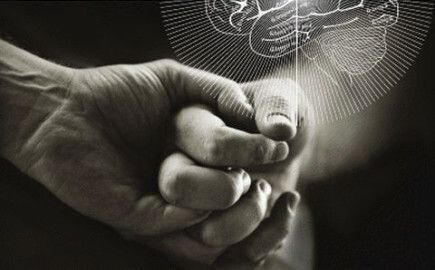by Emiliana R. Simon-Thomas
September 7, 2012
A recent gathering of compassion researchers reveals new discoveries about how and why humans help each other.
Several weeks ago, a who’s who of thinkers and researchers convened at a conference in the mountain town of Telluride, Colorado, to explore the science of compassion. Their discussions revealed growing consensus that the biological, physical, and behavioral properties of compassion—the feeling we get when confronted with suffering, infused with the urge to help—have evolved to help us survive.
The conference—called The Science of Compassion: Origins, Measures and Interventions—encouraged rich cross-disciplinary collaboration and promised to accelerate the pace and progress of scientific inquiry into compassion. (The conference was organized by Stanford’s Center for Compassion and Altruism Research and Education; the GGSC was a co-sponsor.) Here are three key insights I took away from the four days of discussion.
1. Compassion is push-pull
It turns out that feeling safe is a precondition to activating biological systems that promote compassion. In the face of another person’s suffering, the biological mechanisms that drive our nurturing and caregiving can only come online if our more habitual “self-preservation” and “vigilance-to-threat” systems (e.g. fear, distress, anxiety, hostility) are not monopolizing the spotlight.
In the other direction, having a genetic disposition and life history that’s led to a strong sense of social support, trust, and safety around people puts your “self-preservation” impulses at ease and opens the door for you to feel compassion.
How, then, can we relax vigilant, self-preservation systems so that our compassionate biology can more readily get into gear? University of Wisconsin researcher Helen Weng suggests the secret lies in the brain’s frontal lobes, which her studies show do a better job of calming alert signals from the amygdala (the brain’s almond shaped threat detector) when people complete a brief course in compassion.
This means that we can actually train our brains for compassion. When Charles Raison, another presenter, and his colleagues at Emory University also evaluated the effects of a compassion training course, they found lower stress hormones in the blood and saliva of people who spent the most time doing the compassion exercises.
But what’s in compassion training, one might ask? How does it boost the frontal lobes and attenuate stress hormones? Read on...
2. Compassion hinges upon mindfulness
The regular practice of mindfulness—moment to moment awareness of your body and mind—turns out to be a common theme across programs for training compassion, including those based at the University of Wisconsin, Emory University, CCARE, the Max Planck Institute in Leipzig, Germany, a consortium of clinicians in the United Kingdom, and, of course, 2,000 years of Buddhist tradition.
The opposite of mindfulness is sometimes referred to as “mindwandering”—reflexively thinking about what has happened, might have happened, or could or should happen. This very common non-mindful habit has been shown by Harvard researchers Matthew Killingsworth and Daniel Gilbert to decrease happiness.
Judson Brewer, a psychiatrist at Yale University, has shown that mindwandering involves a predictable brain area (the posterior cingulate cortex), and that people can phase out activation in this brain area by practicing mindfulness.
Compassion, data suggest, comes more readily if people can be more openly aware of the present moment as it is occurring, particularly in the presence of other’s suffering, without reflexive thinking or judgment. (For more on the links between compassion and mindfulness, stay tuned for details about the GGSC’s conference on the relationship between the two, to be held in March of 2013.)
3. Brains like helping the group more than helping the self
Studies using optogenetics, a technique for making populations of living brain cells fire, and fMRI, which measures how much oxygen neurons are using, show that the brain’s pleasure systems also play an important role in compassion.
For example, extending compassion toward others biases the brain to glean more positive information from the world, something called the “carryover effect.” Compassionate action—such as giving some of one’s own earnings to charity—also activates pleasure circuits, which some people call “the warm glow.”
In the words of Dr. Jamil Zaki, a professor of psychology at Stanford, “humans are the champions of kindness.” But why? Zaki’s brain imaging data shows that being kind to others registers in the brain as more like eating chocolate than like fulfilling an obligation to do what’s right (e.g., eating brussel sprouts). Brains find it more valuable to do what’s in the interest of the group than to do what’s most profitable to the self.
In his keynote address, Richie Davidson, the director of the Center for Investigating Healthy Minds at the University of Wisconsin, highlighted the legacy of philosophical thought—now corroborated by a growing body of research—suggesting that compassion is both fundamental and beneficial to human survival.
Davidson advocated that academia—and all workplaces, for that matter—provide facilities and paid time for training compassion. When he shared a photo of the Tibetan-Buddhist-inspired onsite meditation facility at his center and discussed their “time off for retreat” policy, the crowd cheered enthusiastically.
While speakers like Davidson might have been academics, their insights can be applied to many domains of life—from marriages and neighborhoods to workplaces and schools—to spread compassion well beyond the mountains of Telluride.
The author, Emiliana R. Simon-Thomas, Ph.D., is the science director of the Greater Good Science Center.
See article from source:

